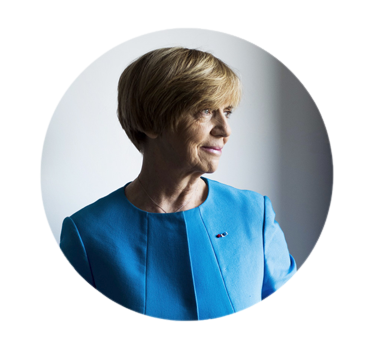175 years of growth: the backstory of an ambitious international strategy

Since taking over as CEO of Thuasne in 1991, Elizabeth Ducottet has never stopped developing Thuasne’s international presence. That strategy has borne fruit, with 15 subsidiaries in Europe, the United States and Asia, making it one of the leading players in the global market for medical devices. Here, she looks back at the past challenges with this strategy and the prospects ahead for Thuasne.
What is Thuasne’s strategy for international growth?
Thuasne has built on its position as a major player in the French market and developed a strategy of gradually expanding its sales territories to areas that are ever further from its original home, launching initially in Europe and later elsewhere in the world. Our approach to international expansion is determined by the country involved, the historical context and the opportunities available. We have grown through the acquisition of local companies or our distributors, particularly in eastern Europe. In some countries, we have expanded by forging partnerships, in others, like Italy, we opted to create our own distribution company.
Why have you focused on external growth?
Healthcare markets are very specific, with every country having a lot of regulatory, medical, economic, and cultural parameters that need to be taken into account. They are difficult to penetrate without having a local presence. Furthermore, our work requires detailed knowledge of doctors and patients, who are our prescribers and users. It’s a complex but essential task. Thanks to our acquisition policy, we have been able to access new markets with our own companies and deal directly with local actors there. It’s been vital for building our international presence in an efficient way.
Did one of these acquisitions in particular prove to be a turning point for the Group?
Our first acquisition in the United States – Townsend Design in 2011 – was a major step forward in our development. The US healthcare system is very different to the one in France; access to care and its reimbursement relies mainly on private companies, which means that healthcare costs are placed far more on individuals. We had to familiarize ourselves with the different relationship that US patients have with their healthcare providers. Townsend Design also enabled us to expand our portfolio with a technology that we were unable to provide at the time: the rigid knee brace.
What are the challenges of developing Thuasne internationally and how do you respond to them?
Any international move requires long-term vision and the courage to make major investments – both in terms of people and finance – in the knowledge that success will not come overnight. It takes time to build a brand and to win the trust of customers and prescribers. But the results are there now for all to see: the subsidiaries we have created or acquired about 10 years ago are all well-known and have positioned us as a truly global competitor. More than just building a reputation, it’s about establishing legitimacy in the marketplace – and millions of people around the world put their trust in Thuasne today. It’s a great source of pride for the Group.
What are the prospects for the Group’s international growth?
We want to strengthen our presence in geographical areas where we do not yet have a majority share of the market. The United States is obviously a priority. We have a solid presence there already, but we can acquire additional market share and raise our profile. It’s a real challenge because, when it comes to healthcare, the US has as many markets as it has individual states. There are opportunities too in Europe, particularly in fast-growing countries like Portugal and Romania. Lastly, the Asian market is still to be explored, especially India, where we have the benefit of a very promising joint venture.